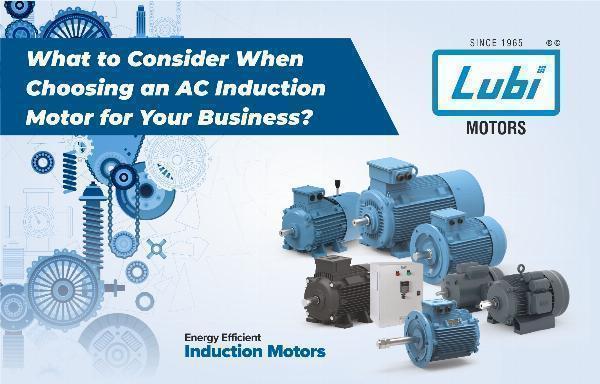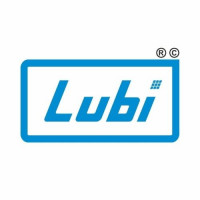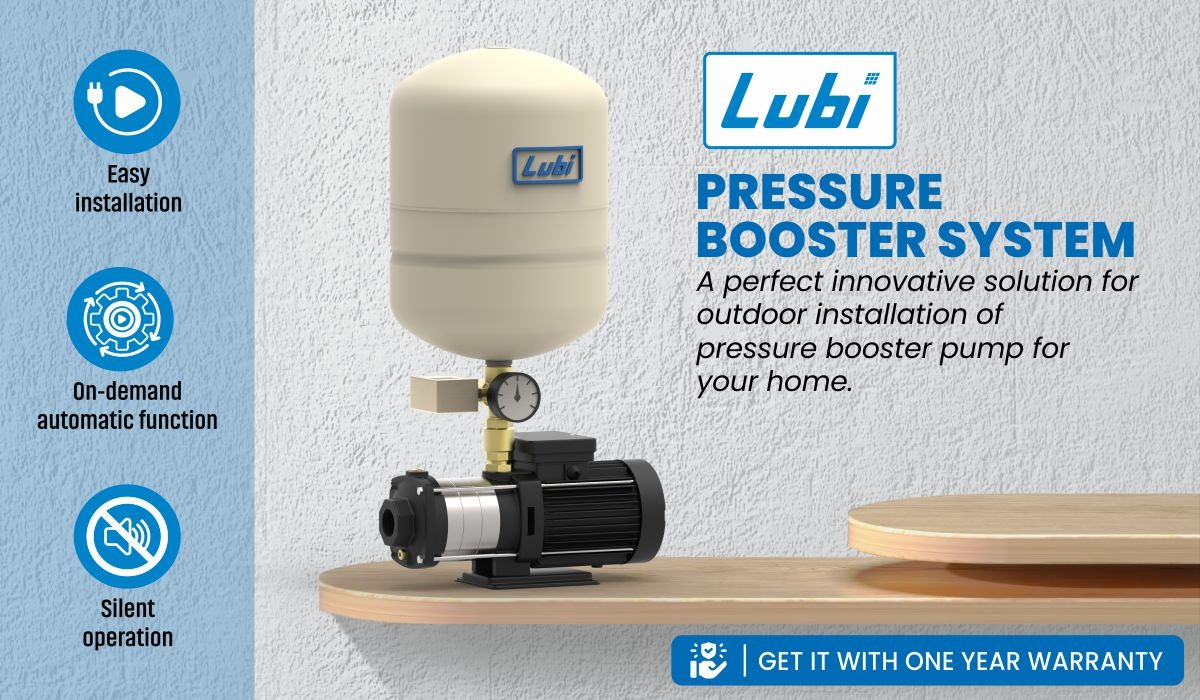Considerations When Choosing an AC Induction Motor

Strong8k brings an ultra-HD IPTV experience to your living room and your pocket.
In the realm of industrial machinery and manufacturing, AC (Alternating Current) induction motors stand as indispensable workhorses. They are responsible for powering an array of equipment, from conveyor belts and pumps to compressors, cooling tower, rotating equipment and fans. As a business owner or engineer, selecting the right AC induction motor is a pivotal decision that can significantly impact your operations and bottom line. When it comes to making this critical choice, partnering with a trusted Electric Induction Motor Manufacturer becomes paramount.
AC induction motors serve as the beating heart of many industries, playing a critical role in sectors like manufacturing, agriculture, energy, and transportation. They provide the muscle that keeps production lines moving, and goods and services flowing.
The wrong choice of motor can result in inefficiencies, increased operating costs, and even equipment failure. Choosing the right AC induction motor tailored to your business needs is essential for optimizing performance, energy efficiency, and reliability.
In this article, we’ll explore the key factors you must consider when selecting an AC induction motor for your business to ensure your investment aligns perfectly with your operational requirements.
Understanding AC Induction Motors
Now that we’ve established the critical role of AC induction motors and the importance of choosing the right one, let’s dive into the inner workings of these motors and explore the different types available to help you make an informed decision.
AC Induction Motor Types
Single Phase Motors:
Single phase induction motors are commonly used in smaller applications, such as household appliances, small pumps, compressor and fans. They are suitable for businesses with relatively low power requirements. However, they are not ideal for heavy-duty industrial processes.
The four main types of single-phase induction motors are:
- Split Phase Induction Motor: This type of motor features a split-phase winding arrangement, which provides moderate starting torque. Split phase motors are often used in applications like fans and blowers.
- Capacitor-Start Induction Motor: These motors incorporate a capacitor in the starting circuit, which provides higher starting torque compared to split-phase motors. They are commonly found in equipment like air compressors.
- Capacitor-Run Induction Motor: Capacitor-run motors use a capacitor in the running circuit, improving efficiency and power factor. They are suitable for applications like pumps and conveyors.
- Capacitor Start Capacitor Run Motor: These are single-phase induction motors that use capacitors for both starting and running. These are commonly used in appliances such as air compressors, refrigerators and powerful pumps.
- Shaded Pole Induction Motor: Shaded pole motors are known for their simplicity and reliability, making them suitable for small appliances like electric fans and refrigerators.
Three Phase Motors:
Three phase induction motors are the preferred choice for industrial and commercial applications due to their higher efficiency and power capacity. They provide more reliable and consistent performance, making them suitable for heavy machinery, manufacturing processes, and HVAC systems.
The two primary types of three-phase induction motors are:
- Squirrel Cage Motors: Squirrel cage motors are widely used due to their simplicity and reliability. They find applications in various industrial settings, including pumps, compressors and conveyors.
- Slip Ring Motors or Wound-Rotor Motors: These motors offer enhanced control over starting torque and speed. They are ideal for scenarios where precise control is essential, such as in cranes and elevators.
Before selecting a motor, assess your business’s power requirements and choose the type that best matches your needs.
Assessing Your Business Needs
With a firm grasp of the fundamentals of AC induction motors, you’re now ready to embark on the journey of selecting the perfect motor for your business. This journey begins with a thorough assessment of your unique needs, ensuring that the motor you choose aligns seamlessly with your operational demands.
Determining the Required Power and Torque
The journey toward motor selection commences with a crucial question: How much power and torque do you need for your application? These two factors lay the foundation for choosing the right motor that can handle the workload effectively and efficiently.
Power, typically measured in kilo watt (KW) or horsepower (HP), quantifies the rate at which work is performed. To determine the power requirement for your application, you must evaluate the specific tasks the motor will perform and the timeframe in which it needs to complete them.
For instance, if you’re lifting a certain weight to a particular height within a defined time, you can calculate the power requirement using the formula:
oPower (KW) = {(Force x Distance) / Time} / 1000
Torque, measured in Newton-meters (Nm) represents the rotational force applied to a shaft. Calculating the required torque involves assessing the amount of force that must be applied and the distance from the center of rotation where the force acts.
You can calculate the torque requirement using the below formula:
oTorque (Nm) = Force (N) x Distance from the Center of Rotation (m)
Understanding the power and torque needs of your application is paramount, as it serves as the cornerstone for selecting a motor capable of delivering the required performance.
Motor Efficiency
Motor efficiency, often referred to as the conversion of electrical energy into mechanical work, is a pivotal metric to consider when selecting a motor. Efficiency ratings help you gauge how effectively a motor utilizes electrical power to deliver mechanical output.
widely recognized motor efficiency classifications is the IE Classification.
- IE Classification: On a global scale, the International Electrotechnical Commission (IEC) established the IE classification system to categorize motor efficiency. The classification includes four levels: IE1 (Standard Efficiency), IE2 (High Efficiency), IE3 (Premium Efficiency), and IE4 (Super Premium Efficiency), IE5 (ultra-premium efficiency).
Choosing a motor with a high-efficiency rating not only reduces energy consumption but also contributes to cost savings and environmental sustainability. Additionally, many regions and governments offer incentives and rebates for the adoption of energy-efficient motors, further enhancing their appeal.
Motor Enclosure
When choosing an AC induction motor, it’s crucial to consider the motor enclosure type and its cooling mechanism. Motors often operate in challenging environments, ranging from high humidity to dusty surroundings, and even areas with potentially explosive gases. Selecting the appropriate motor enclosure is vital to safeguard your motor from these elements. Let’s explore various motor enclosure types:
Read Full Article: What to Consider When Choosing an AC Induction Motor for Your Business?
Note: IndiBlogHub features both user-submitted and editorial content. We do not verify third-party contributions. Read our Disclaimer and Privacy Policyfor details.



